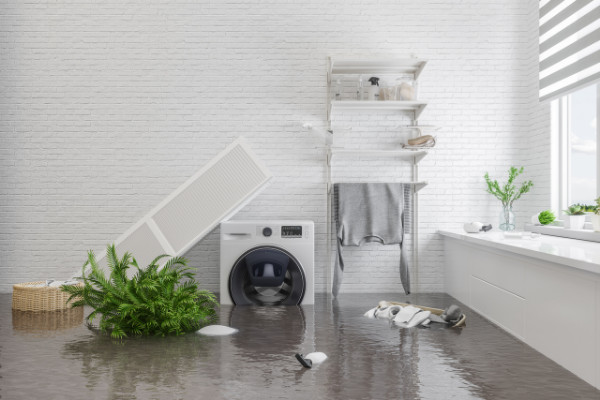Even at home, you are not safe from unexpected situations. No matter how well you prepare, there is inevitably a time in a homeowner’s life when they have to think fast and address an emergency to prevent any further damage.
Water damage is one of the circumstances that could wreak havoc in your home. Sometimes the damage occurs slowly over time, and sometimes it’s just a matter of seconds. Your bathroom, kitchen, and basement are a few of the most susceptible areas because they have more pipes running through them. A break or leak could affect your floors, walls, ceilings, furniture, and appliances.
Most homeowners don’t have expertise in water damage restoration, but they can prepare for the worst by knowing how to take action at the first sign of trouble. Even a small leak under the sink that you can fix should be addressed wisely. Remember—a few key things to remember can save you tens of thousands of dollars on repairs later on.
Here are a few dos and don’ts of water damage to help you mitigate the destruction and prevent additional harm to your family and house.
DO Isolate the Source
Whether it’s a leak in the walls or a pipe break underneath the kitchen sink, it’s essential to isolate the source of the water as soon as possible. Water damage is typically the result of leaking or burst pipes. If you’re lucky, it’s an exposed pipe that you can place a bucket underneath to collect the water until an emergency plumber can come to your aid. If you aren’t so lucky, it’s in the walls and will require a professional’s expertise.
DO Ensure Airflow
Once the source of the water is controlled and repaired, the restoration will begin, during this time, ensure ventilation to air out and dry the water. This will lessen the humidity and moisture in the area and reduce the risk of mould. Keep in mind that even after mopping and removing as much water as possible, some dampness will remain. Airflow is essential for thoroughly drying the area.
DO Secure Important Possessions
It’s best to protect any important documents and possessions from damage by storing them in a waterproof, airtight box. It’s even better to store them in a fireproof safe to prevent fire damage as well. If it’s too late and your documents or any belongings have already been damaged by water, however, remove them from the area and separate them on a drying rack so that the water can dry.
DON’T Touch the Water
If you experience a major leak in your home and an area is full of standing water, DO NOT in any circumstance touch the water or a wet electrical outlet. Exit the house and try to shut off the electricity from the breaker. Then, contact an emergency electrician and water damage restoration company because they have adequate safety equipment and know the right protocols in handling such cases.
DON’T Attempt to Use Household Appliances to Restore Carpets
Household cleaning appliances like vacuum cleaners are not designed to work on wet surfaces. If a room was recently flooded and is still damp, trying to vacuum up the puddles could put you at risk of electrocution. It’s best to call a company specializing in water damage repair as they can restore your home to a safe condition.
Conclusion
Water damage is one of the most unassuming types of household damage because the true culprit can be hidden underneath the surface. Whether you encounter a dripping faucet or a broken pipe that floods the basement, remember our dos and don’ts to correctly address the situation and go about recovery.
Homeowners inexperienced with restoration should never attempt to restore major water damage on their own. That’s why it’s a good idea to call Nationwide Restorations, Edmonton’s premier water damage restoration provider. With over a decade of experience, our team can restore your property and make sure you have a safe house to come home to. Call us today!

